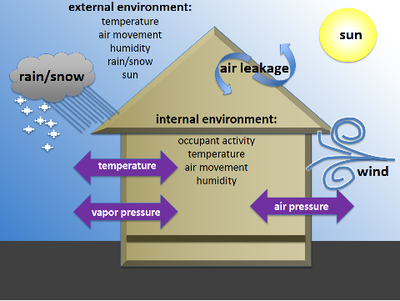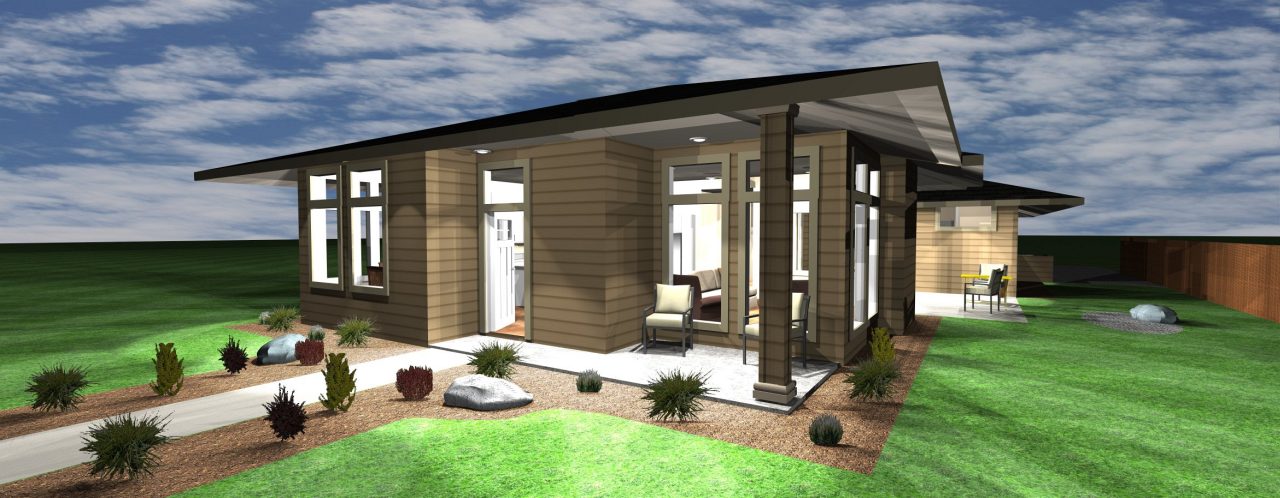Learn a little more about the science behind Pacific Ridge Home's implementation with the building envelope of our Custom Homes.
Green Builder Magazine Names AeroBarrier A Best New Product For Energy Efficient Building.
AeroBarrier®, a breakthrough home and building envelope sealing technology, has been selected to receive a 2019 Product Innovation of the Year Award by Green Builder magazine. Chosen among dozens of competing products and technologies, AeroBarrier stood out as a major achievement in energy efficient building science and a catalyst for advancing the development of energy efficient homes and buildings.
AeroBarrier, uses an aerosolized sealing process that simultaneously measures and seals building envelope leaks. With a computer-controlled sealing system, AeroBarrier replaces the traditional multi-product / multi-process approach to envelope sealing with a single application that provides a more consistent, less expensive way to seal the entire building envelope.
![]() Durable
Durable
Sealant achieves durability performance in 3 key areas: flexing,
aging and compatibility in tests simulating 50 years of service.
![]() Safe
Safe
GreenGuard Gold certified with Ultra-low VOC content and no
off-gassing. Work can resume in the home within 30 minutes.
What is the sealant made of?
The AeroBarrier X1 sealant is a waterborne acrylic. The sealant is GreenGuard Gold certified and has been tested according to various ASTM standards and NFPA 285, for fire spread, smoke production, adhesion, antifungal properties, and tensile strength. The sealant is ultra-low VOC and has no off-gassing.
If you would like to discover more about the product and the installation process, you may watch a short video from January 3, 2019, when the PBS program This Old House illistrated it's use.
Click to Start
More Information About How the Air Moves Through Your Home
Air infiltration is the movement of air into a building, whereas air exfiltration is the movement of air out of a building. Air leakage into building interiors has a considerable impact on the energy demand of the building.  This means that controlling how air moves into and out of buildings is a big part of house energy efficiency can be improved for buildings. Energy, typically in the form of heat, must be added to or removed from a building in order to maintain a comfortable interior climate for the occupants. Heating, ventilation and air conditioning (HVAC) systems are used to add or remove heat from a building interior and the operation of these systems costs money.
This means that controlling how air moves into and out of buildings is a big part of house energy efficiency can be improved for buildings. Energy, typically in the form of heat, must be added to or removed from a building in order to maintain a comfortable interior climate for the occupants. Heating, ventilation and air conditioning (HVAC) systems are used to add or remove heat from a building interior and the operation of these systems costs money.
Consequently, air infiltration and exfiltration will impact a building’s energy costs. Infiltration also affects indoor air quality because it introduces pollutants, allergens, and microbes into the building. It can also result in moisture accumulation in the building envelope because airflow carries with it rainwater and water vapor (see moisture intrusion). Of course all buildings must have sufficient ventilation to be comfortable as well, which is why air infiltration and exfiltration must be handled properly.
Air flows into or out of a building because of pressure differences between the internal and external environments of the building. These pressure differences can be caused by gusting winds or differences in internal and external temperatures. The air will flow through the various openings in the building envelope. These vary from from large openings such as doors and windows, to small cracks and crevices caused by improper installation of envelope components.
Learn more about the "Basics of Air Tightness - A tight home is a high performance home."![]()


